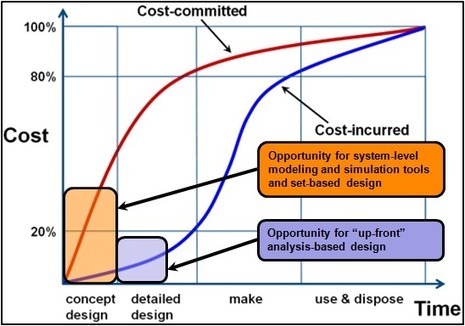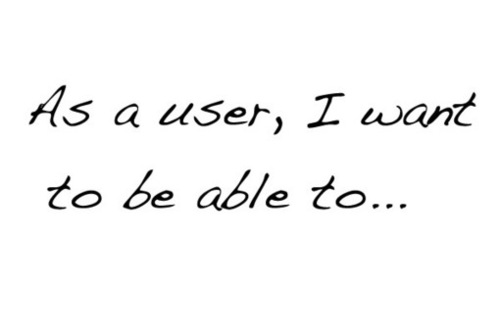Prototyping
Engineering Where the Most Opportunity Exists > ENGINEERING.com
This blog on “Design Software” is not going to be about a review of what exists, but rather in what I feel is missing in the current offerings from so…
– The best chance for a product to be developed to strike the balance between obtaining the highest performance, lowest cost, and any other requirement exist at the earliest stages of development.
– The ability to consider multiple concepts and measure/simulate performance against requirements early, i.e. before any detail design activities begin, maximizes the opportunity for a product to be successful.
– In other words: the best concept yields the best product.
So if the best potential for success is in the concept development phase, where are the conceptual engineering software tools?
See on www.engineering.com
8 Steps to Follow for Product Managers Without a Technical Background
1. Find your closest ally in the engineering team: Build a special relationship with the VP of Engineering, or someone in a similar role, and make sure the lines of communication between you two are always open.
Underlining the great points Chris makes, here’s some how to’s
1. eat lunch with engineers and find out what they like to eat/drink and drop by their desk bearing gifts
2. to gain respect from engineers – learn their language, code preferences, pains and provide solutions, data, information that they need at the right time. Don’t be a doosh.
3. be humble, have a tough skin, stand up to take responsibility for blame, frustration, feature fails directed at product team – protect them from harsh reality so they can stay focused and productive
4. provide visual representation of the goal – paper prototypes, anything that can be used as a dart board works…
5. take care of yourself so you can be a source of constant, continuous, and on-demand positivity
6. be a data geek – know how to access, query, present, identify and make sense of key data points at all times (will also enable growth hacking & your career growth)
7. Customers – this is number one. Add to it non-customers, competitors customers, and ex-customers – understand and love them also because they will tell you the truth about what’s wrong with your product, where customers will justify what’s right with it.
8. Answer to a higher power – keep your KPIs, product vision/mission and professional manifesto at eye level so you can say NO, be called a doosh, and deal with conflicts with sales and other stakeholders that want the product & YOU to serve their purpose, rather than your roadmap goal.
See on chrishoog.com
Startup Product Talks: Two Steps to Making Your MVP a Success with Poornima Vijayashanker
Too often companies spend a lot of time fixated on perfecting their prototype. After putting in a lot of effort to build it, they launch, but are left wondering why users aren’t using their product! In this talk I’ll cover the two most critical steps companies overlook, which can save them from wasted efforts and lead them to a successful launch.
Poornima shared her presentation!
Join us to learn the two most critical steps companies overlook, which can save them from wasted efforts and lead them to a successful launch.
See on www.meetup.com
Listen to Poornima on the Global Product Management Talk:
Key Takeaways from the Design Thinking and Rapid Prototyping Panel at Startup Product Summit SF
By Michelle Sun
I had the privilege to attend the first Startup Product Summit in SF on Feb 7, 2013. It was a great lineup of speakers and a full room of buzzing energy and great conversation. Without further adieu, I’d like to share some key learnings of each panel.
Please let me know if I omitted or made any errors in the references. Credit for the good stuff is entirely the speakers’ (link to twitter handles are included on each name).
“Turning Mediocre Products into Awesome Products” – Jonathan Smiley, Partner & Design Lead, ZURB
- Ideation and iteration can ”turn mediocre products into awesome products”.
- Discussed a full spectrum of research from market-driven (focus group, survey) to user-driven (remote teaching, usability teaching)
- Importance of sketching, a lot, aim for speed and volume, then critique
- Advice to the audience: ”do 10 more sketches ( more ideation is always better ), build 1 more prototype, get 1 more round of feedback, ask 5 more customers”
“Being a UX Team of One” – Vince Baskerville, Product, Lithium & Co-Founder, TripLingo
1. Internal politics is a common challenge as a UX team/professional. Learn to manage expectation of different internal stakeholders and keep everyone in the loop.
2. Don’t listen to what customers are saying. Users’ claims are often unreliable. See what they are doing. Understand the underlying issue.
“Validate Your MVP on Paper” – Poornima Vijayashanker, Founder & CEO, BizeeBee & Femgineer
– 2 Reasons MVP Fail
1. Fail to figure out how to provide a simple value proposition that differentiates your product from your competition
2. Fail to figure out who their early adopter are.
– Early adopters are people who aren’t using the competitor’s product. Don’t want to take time to switch over.
– Steps on usability testing
- Explain the problem. What you are testing. How they are helping. Get them excited about the idea.
- Set expectations. Make them comfortable.
- Communicate intention (what exactly are you testing and specific feedback you are looking for).
- Thank them for their time. Follow up regularly.
Poornima’s slides are available here.
“Everyone’s Customers Are Wrong” – Evan Hamilton, Head of Community, UserVoice
- Data doesn’t tell the whole story. Analytics are bandaids because we can’t watch our customers.
- People don’t tell the whole story. Identify who the users are, where the feedback are from. Are they: paying/freeloaders? Using product in the intended way? Using main features? Early adopters / ‘tech fanatics’ (who are not likely to stay on a product for the long haul)?
- Combine data and customer stories. Customer feedback / feature suggestion usually leads from a deeper issue. Find out what the actual problem is by understanding the underlying need.
- Don’t lose track of your creative mind by getting lost in data rat-hole. Don’t chase 1% when you can get 15%. Not just A/B, but try something crazy. Try big bold things along with incremental fine-tunes.
“Designing for Everyone: The Craft of Picking or Killing a Concept” –Miki Setlur, Product Designer, Evernote
- Everyone use product in many different ways. A useful strategy is to segment users into business, partners (e.g., app stores for Evernote’s case) and users.
- Figure out what each segment cares the most about: Business / Partners – acquisition, retention, engagement, revenue. Users – being faster, better, happier.
- Case study on how Evenote’s design process stroke balance between business goals (monetizing) while being sensitive to user experience and goals (finding things faster).
Other relevant points
How to access willingness to pay during pre-product interviews. Get the first dollar within the trial period. Provide clear value proposition from the get-go.
How to get good feedback. Be specific in what feedback are you looking for. Instead of asking in general ‘what do you think of the prototype’, ask whether they are confused on what stage, what was confusing.
Tips on prototyping. Put more emphasis on story telling than illustrating.
For remote testing, use keynote as prototyping tool, screencast the keynote.
On the tension between product vs. business goals in roadmapping a product. Early stage products make sense to focus on product. Once reached product market fit, it makes sense to lead with business goals such as, acquiring, converting, retention customers.
Also mentioned was a tool called Impact Mapping.
Read on:
- Key Takeaways from Roadmapping and Execution Panel
- Key Takeaways from Marketing and Getting Traction Panel
About The Author
Michelle Sun is a product enthusiast and python developer. She worked at Bump Technologies as a Product Data Analyst and graduated from the inaugural class of Hackbright Academy. Prior to Hackbright, she founded a mobile loyalty startup. She began her career as an investment research analyst. When she is not busy coding away these days, she enjoys blogging, practicing vinyasa yoga and reading about behavioral psychology. Follow her on Twitter at @michellelsun and her blog.


